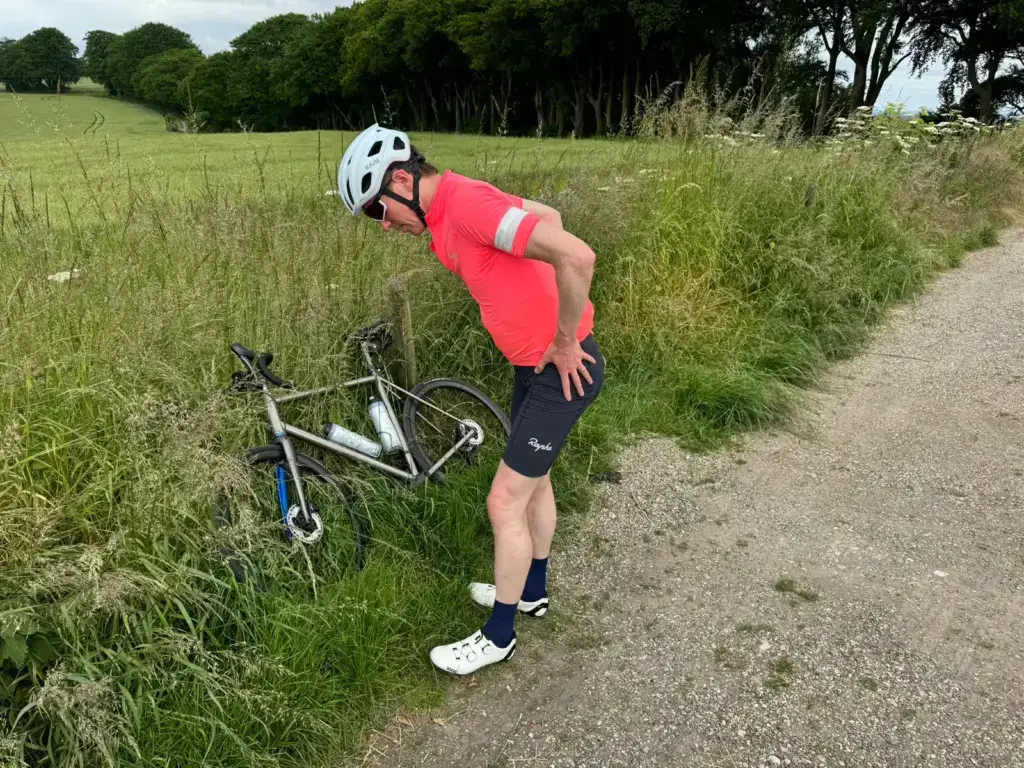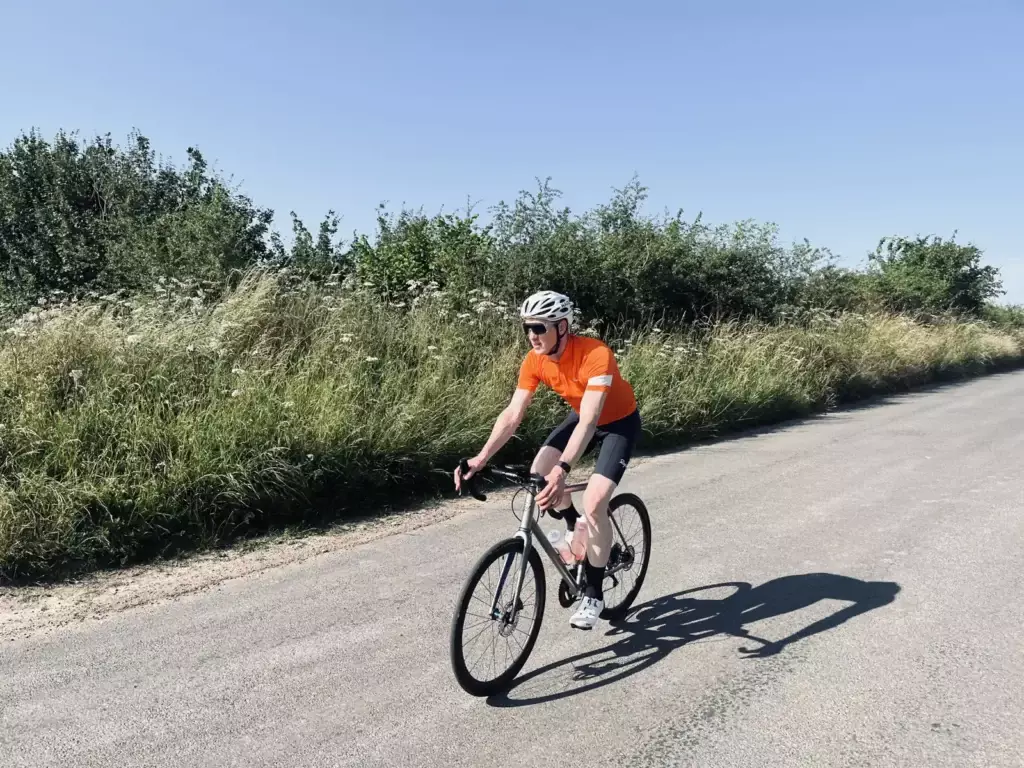Cycling can be a fantastic, low-impact exercise for many physical ailments. It’s an excellent aerobic activity with additional cardiovascular benefits and can help to work your lower body muscles, strengthen your core, and tone your upper body.
Cycling is also great for increasing mobility and can be an effective way to treat hip pain.
This article will explore why cycling is suitable for people suffering from hip pain and look at how to avoid worsening injuries or hip pain while cycling.
Key Takeaways: Is Cycling Good for Hip Pain?
- Gentle cycling can be a great way to treat hip pain.
- Cycling increases mobility and motion in the hips.
- Cycling is a low-impact form of exercise that is suitable for those suffering from hip osteoarthritis.
- Your cycling position is essential to help with hip pain.
- A poor bike fit can increase the risk of injury.

Why Cycling Can Be Good for Hip Pain
Cycling is an excellent way to recover from hip injuries or reduce hip joint pain. Pain caused by osteoarthritis (hip arthritis) is caused by the deterioration of cartilage between the bowl of the pelvis and thigh bone.
As the hip is a ball and socket joint, it’s essential that care is taken to ensure motion is fluid.
Cycling helps to keep cartilage flexible and can help to reduce osteoarthritis progression.
Cycling also strengthens and improves tendon and muscle conditions. It loosens the hip flexors and allows for a greater range of motion and reduced stiffness and pain.

How to Avoid Exacerbating Hip Pain While Cycling
If you suffer from hip joint pain, it’s essential that you take care when exercising. Hip pain from cycling is typically caused by a poor bike fit or positioning. Overuse injuries are also possible so injury prevention must explore all these possibilities.
A good bike fit will mean you have a slight bend in your knee when you are at the bottom of your pedal stroke. This will also mean hip flexion won’t extend too high on the upstroke of your pedal.
A more upright position can be achieved by raising your seat and handlebars, this will help minimize hip flexion. Hip flexion is the motion that happens when your knee moves up toward your chest. This occurs during every pedal stroke.
Sitting in a cycling position for a prolonged period can result in tight hip flexors. Speaking with a doctor or physiotherapist can help you determine how long you should cycle.

Other Considerations for People with Hip Pain
Carrying out gentle stretching exercises to warm up and down also helps with cycling. This helps with blood flow and begins the process of loosening your hip flexors.
Your hip flexors contribute minimal power production and are used to unweight the pedal stroke and allow the other leg to push down.
You should avoid actively pulling up as this can lead to the muscles being overloaded.
Some gentle stretching exercises that can help with tight hip flexors and hip function include:

The lunge press
To properly engage a lunge press you should take a big step forward into a lunge position. Your front knee should bend over the front foot.
Extend your back leg with the top of the foot flat to the floor. Keep an upright posture and gently press your hips forward.
You will start feeling a stretch in the hip area at this point and should move slowly so you don’t push too far too soon.
This should then be repeated on the other side.
Butterfly
Sit with your back straight and press the soles of your feet together with your knees pointing out to the side.
Hold your feet and move your torso forward while keeping your back flat. You should start to feel your inner thighs (abductors) and outer hips begin to stretch.
Single-leg pull
For a single leg pull you should lie back with both legs straight out. Bend one leg at the knee with the foot flat to the floor and bring it towards your hip.
Hold behind the thigh of the bent leg while keeping the other straight and bring the knee up towards your chest. Gently push the other leg away and contract your glute as you do this to increase the stretch.
This should then be repeated on the other side.
How to Gradually Increase Cycling Intensity and Duration
If you want to enjoy a more active lifestyle with regular exercise, it’s essential you don’t increase your training volume too quickly.
Starting slowly will allow you to improve your hip motion and function gradually. If the exercises you do are causing pain, you should speak with your healthcare professional or physical therapist.
Doing simple stretches before and after your workout will help and you must get enough rest to allow the muscles to recuperate.
Starting with a 5 to 10-minute session with low resistance will give you lots of opportunities to increase the time, distance, and resistance of your cycle.
Resources for Further Information and Support
If you are suffering from hip pain, your first port of call should be with your doctor or a healthcare professional. Physical therapists are also able to give you advice.
FAQs
Should I apply heat or cold to sore hips after cycling?
Applying both cold and hot packs to sore hips after cycling has been shown to help. Testing both to see which produces the best results for you is advised.
Ice packs will typically ease pain and reduce swelling. Heat packs will help to increase blood flow.
Depending on your condition, a doctor may advise one over the other.
Why is it important to warm down after cycling?
Failing to properly warm down can lead to tight muscles and increased hip pain.
Can my diet affect my hip pain?
Your diet is essential to muscle recovery. Foods such as unhealthy fats and added sugars can also fuel inflammation.
A good diet will help reduce hip pain and allow you to reach a healthy weight. This is also important for joint health and your general well-being.
